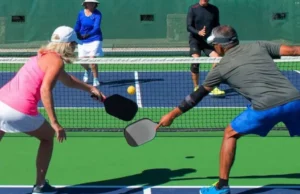In pickleball, a dink is a soft, controlled shot that is hit into the kitchen. Here’s what makes dinking so important to master in your pickleball game:
1. Neutralizes Power Players
-
A well-placed dink keeps the ball low and soft over the net, making it hard for opponents to hit aggressive shots or smash.
-
It forces opponents into a controlled game instead of a fast-paced one, which helps level the playing field.
2. Sets Up Attack Opportunities
-
By keeping the ball low and close to the net, you can bait your opponent into popping the ball up.
-
This “pop-up” creates an opening for you or your partner to hit an aggressive volley or smash—a “put-away” shot.
3. Minimizes Unforced Errors
-
Dinking reduces the chances of hitting the ball out or into the net compared to hard, risky shots.
-
Especially in tight matches, keeping the ball in play and waiting for the right moment is a winning strategy.
4. Controls the Kitchen (Non-Volley Zone)
-
Dinking keeps the game at the net, where most points are won or lost.
-
Mastering the dink allows you to control the non-volley zone (kitchen) and apply pressure with soft precision.
5. Encourages Patience and Consistency
-
The dink game requires mental discipline and forces your opponent to engage in longer rallies, increasing their chances of making a mistake.
In Summary:
It’s not just about being flashy—dinking is about control, patience, and precision. It’s a key tactic used by high-level players to outsmart opponents rather than outmuscle them.


